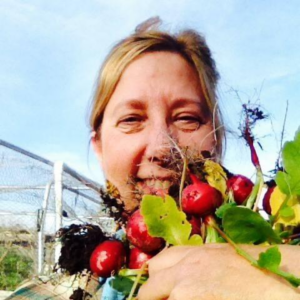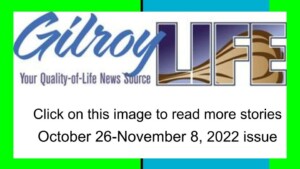Your Garden … with Sharon McCray: There is a lot to consider as you prepare your garden for winter months
With diminished flower resources during the winter months, it is important to continue feeding resident birds.
![]()

It’s important to keep up with the weeding in your garden during winter months in the South Valley.
By Sharon McCray

Sharon McCray
Sometimes there is so much going on it is difficult to decide priorities and what needs discussing most. Putting our summer garden to rest, amending soil in anticipation of winter rains, what to plant now for winter and spring harvest are all relevant topics.
Lettuce, spinach, peas are a good start to plant now. Lettuce and other leafy greens should be planted in two week intervals. Planting a few seeds every couple of weeks will ensure that fresh garden lettuce and spinach can be enjoyed all season long.
Now is also a perfect time to plant nitrogen fixing plants such as vetch, clovers and fava beans, which will add nutrients to the soil while providing food for insects and bees. Especially nice is crimson clover, which adds color to a dreary space.
Now is also an important time for migrating birds. As a gardener, the first course of action is to encourage appropriate flowers and seed producing plants. However, during winter months, this can be a difficult project in some landscapes. By preparing a chart of what produces nectar, pollen and seed during the year, will help determine what is lacking and what areas needing improvement. The need for seed, fruit and nectar feeders for resident birds is also an important issue..
With diminished flower resources during the winter months, it is important to continue feeding resident birds. They have become accustomed to the availability of an easy meal. Keep feeders clean by washing with hot soapy water and rinsing well. Provide fresh food regularly. Use only pure cane sugar in preparing your nectar mixture.
 Recent research indicates hummingbirds can be subject to iron poisoning brought on by too much iron in the sugar used for making home-made nectar syrup. Any orange discoloration in the water is usually an indication of excessive iron. It is always safer and healthier for the birds to use a commercially prepared food mixture. Although 80 percent of the hummingbird diet is from insects, the sweet and syrupy mixture is always appreciated. Research also proves added coloring to the mixture is not needed as the birds are attracted to the color of the feeders first and not necessarily the mixture.
Recent research indicates hummingbirds can be subject to iron poisoning brought on by too much iron in the sugar used for making home-made nectar syrup. Any orange discoloration in the water is usually an indication of excessive iron. It is always safer and healthier for the birds to use a commercially prepared food mixture. Although 80 percent of the hummingbird diet is from insects, the sweet and syrupy mixture is always appreciated. Research also proves added coloring to the mixture is not needed as the birds are attracted to the color of the feeders first and not necessarily the mixture.
Feeding songbirds is helpful to encourage healthy populations. Better yet, is to let some flowers and grass go to seed, creating a natural diet. Excess commercial seed, if allowed to fall to the ground can encourage rats and other critters. Try mixing cayenne or chili powder with seed to discourage any unwanted guests. Products currently being sold include the peppers but can be pricey.
Most seed is viable and will germinate in damp soil creating other issues in the garden. Baking seed in a 250 degree oven for 20 minutes helps minimize the germination by sterilizing the seeds. The Santa Clara Valley Audubon Society is an exceptionally good resource. A final note, providing food for migratory birds will not stop their natural instinct to migrate.
There are confirmed cases of highly pathogenic avian influenza in Santa Clara County. It is a critical issue of major concern right now. HPAI is responsible for killing millions of poultry throughout the world, including chickens, turkeys and ducks. The virus is spread by wild migrating birds like Canada geese but affects farm raised birds. There are no cases of HPAI infecting humans. To report sick or dead birds call (916) 358-2790 or contact cdfa.ca.gov.
This time of year it is also important to keep up on the winter weeds and only water as needed. Remember, the two major killers of plants is water: either too much or not enough. Good luck, and enjoy the season.
Sharon McCray is a California native living in Santa Clara County since 1959. She became certified as a University of California cooperative extension master gardener in 1992 and a UCCE master naturalist in 2015. She hosts a monthly radio show on KKUP public radio and is now retired.

